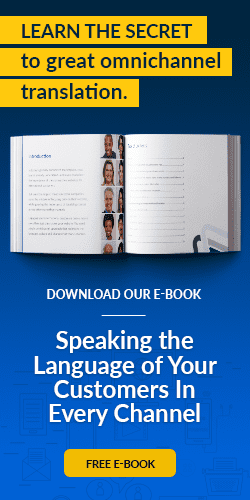If you haven’t yet expanded into new international markets, here’s a survival tip: Your global customers will demand a great website user experience. They’ll want to explore and transact on a website published in their language, not yours.
They want those translated sites to have the same content and functionality as your flagship primary-market site. Ironically, they also expect to see cues that your company caters to their unique culture, holidays and shopping behaviors. The same experience, but different.
To perfectly serve global customers, you should deliver a familiar, yet unique, user experience on your international websites.
This is a tricky tightrope to walk. To do it right, you must embrace two website-translation best practices: content parity and localization. And you must do this without “over-localizing” your content, which alienates your new customers.
Why Content Parity Matters
Regardless of where they live or how much of your market share they represent, global customers crave content parity. This means providing a fully-translated website that is identical (or nearly identical) in scope to your primary-market website.
It might be tempting to provide global customers with untranslated online experiences, or translated sites with reduced functionality, or translated microsites. Don’t go there. Studies suggest customers consistently abandon sites that have:
- A “mixed language” experience
- A compromised user experience
- Limited content or site size
Customers feel like second-class citizens when they visit these sites. The potential fallout—diminished site traffic, dwindling social engagement and lower conversion rates— can devastate your growth in new markets.
It’s tempting to provide global customers with translated sites or microsites that have reduced functionality. That’s a bad call.
Leveraging content parity establishes instant credibility and trust among global customers. But to level up your site’s performance, and the conversions it can generate, consider embracing the power of localizations.
Go Beyond Translation with Localized Content
To achieve optimal marketing results in your new markets, you should do more than translate your website. Customizing some web content for local customers allows you to create rich, persuasive messaging that can boost engagement and conversions.
Customizing website content for local customers often generates more inbound traffic and on-site conversions.
This approach to translation and marketing—called localization—caters to a market’s unique culture by using locally-preferred lingo, showcasing a fluency in local holidays and celebrations, and local buying habits. This approach offers several benefits, including improved brand credibility, organic search rankings and more.
But don’t fall into the trap of over-localization—customizing your local sites so much that you essentially create totally separate user experiences from your primary website.
Finding the Sweet Spot for Localized Content
While customizing content for local markets is important, you can overdo it. Such ‘over-localization’ creates issues, like:
- Operating and updating your highly-localized site becomes needlessly complex
- With so many unique “content tweaks” unique to your site, it may take more time to create and publish translated content
- Global customers like a little customization, but not a lot—over-localizing can work against the benefits of content parity
So how do you customize content for local markets while maintaining brand consistency—all without over-localizing your content? Follow an 80/20 split on translation versus localization of your multilingual website.
Be careful—overly customizing your translated websites can thwart the persuasive experience that content parity provides.
In simple terms, 80% of your translated website content should mirror your primary-market’s website. The remaining 20% can feature localized content. Place this customized messaging on your home page, products and services landing pages, special promotions, and local customer support information. This delivers on your customers’ expectations of content parity, while illustrating your fluency and commitment to their markets.
Conclusion
As you extend your global reach into new markets, look for website translation solutions that make this tricky tightrope effortless to walk. Consider solutions that deliver accurate, authentic translations as well as engaging, results-producing localized content relevant to specific markets.
The best solutions also respond to your company’s unique needs, can get along with your website management platforms, easily track and update new or changed content, and offer world-class translators who are fluent in languages, cultures and customs—wherever your customers live.
Last updated on September 13, 2017
